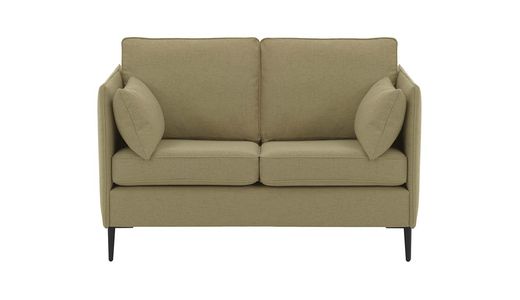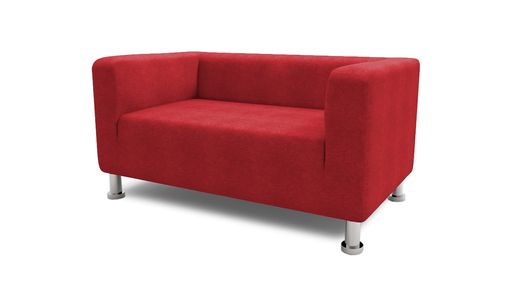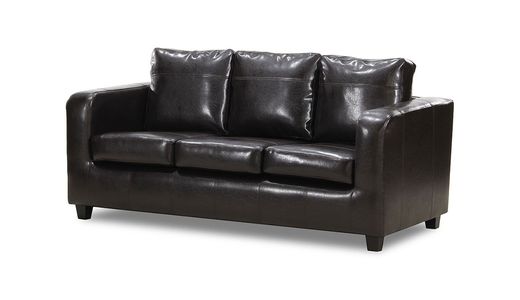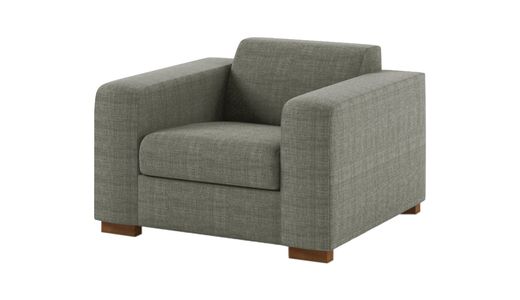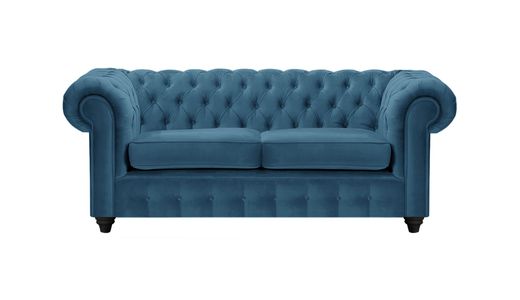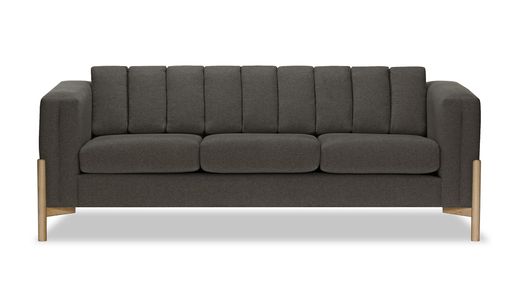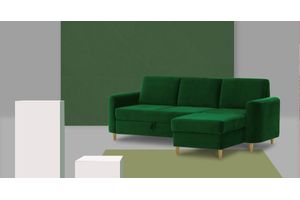
Biophilic design - bring nature into the interior
Biophilic design is an approach to interior design that relies on a deep connection between humans and nature to bring elements of nature into everyday life. Based on psychological and ecological research, this design trend aims to create a harmonious environment that improves the well-being, health and quality of life of the occupants. Introducing elements of nature into interiors not only enhances their aesthetics, but also creates a soothing, relaxing atmosphere. Using plants, natural materials and organic shapes allows you to get closer to nature, even in an urban environment.
Biophilic design also has great benefits for mental health. Studies show that being in spaces that reflect nature can lower stress levels, improve concentration and promote deeper relaxation. This design approach is increasingly finding its way into offices, schools and homes, bringing harmony and balance to various aspects of daily life.
Potted plants - oxygen and freshness in every corner
Potted plants are one of the simplest and most effective ways to bring nature into an interior. Their presence not only adds freshness to the space, but also improves air quality and benefits our health. It is worth choosing a variety of species that vary in height, shape and color, which will allow you to create interesting and dynamic plant compositions. Plants such as ferns, philodendrons or succulents not only decorate the interior, but also clean the air of toxins, which is extremely important, especially in confined spaces. Plants can be spread on windowsills, shelves or placed in hanging pots, creating green accents in different parts of the apartment.
Emphasize the natural character of your interior - see how the Malone 3 Seater Sofa can transform your space.
Advantages of introducing potted plants into the interior:
- They improve air quality, cleansing it of toxins.
- They create a pleasant microclimate, increasing humidity.
- They have a soothing effect, reducing stress levels.
- They introduce vibrant accents that enliven the space.
Natural materials - warmth and authenticity
Natural materials, such as wood, stone, rattan and wicker, have extraordinary power to transform an interior, giving it warmth, authenticity and natural charm. Wood, especially in its raw form, brings a feeling of calm and stability to a space, while adding to its coziness. Furniture made of natural materials is durable and timeless, making it an excellent choice for those who want to create an interior with a long-lasting character. Wicker or bamboo, often found in accessories and decorations, emphasize the ecological aspect of the arrangement and fit in with the growing trend of sustainable design. By choosing natural materials, we not only introduce elements of nature into the interior, but also build a healthy and environmentally friendly space.
An additional advantage of natural materials is their effect on indoor air quality. These materials, unlike synthetic counterparts, are usually free of harmful chemicals, which means that they do not emit toxic substances and promote a healthy microclimate. Wooden furniture, stone countertops or rattan decorations create a harmony that brings us closer to nature, even in the most modern interiors.
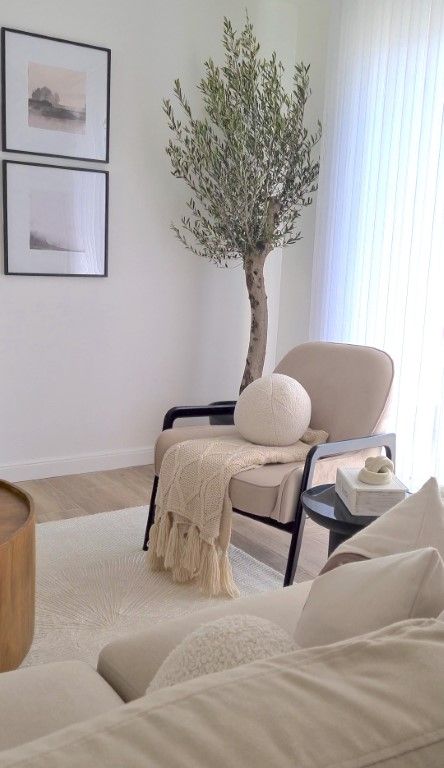
Luminous accents - proximity to natural light
Natural light is a key element of biophilic design, as it brings energy to interiors and enlivens the space. Large windows that maximize the exposure of daylight are one of the basic solutions in this style. Daylight has a positive effect on our mood, stimulates activity and creates a friendly environment. In case of limited access to natural light, it is advisable to use mirrors that reflect the sun's rays and increase their range. Lamps that emit warm light close to natural light are also a good option, helping to create a cozy and comfortable atmosphere indoors.
The light is not only functional, but can also play a decorative role. Lamps made of natural materials, such as wood or bamboo, fit perfectly into biophilic design, emphasizing its natural character. It is worth remembering that proper lighting, both daylight and artificial, has a huge impact on how we perceive a space and how we feel in it.
Plant motifs and natural patterns - nature-inspired decorations
Biophilic design is not only about living plants or natural materials, but also nature-inspired patterns that appear on fabrics, wallpapers and decorations. Plant motifs, such as leaves, flowers or trees, can introduce subtle references to nature that enrich the aesthetics of a space. Wallpaper with leaf motifs, curtains with a delicate floral pattern or pillows with a branch print create a harmonious whole that promotes relaxation. Nature-inspired patterns are a great way to enliven an interior and add lightness without introducing overbearing elements.
Paintings depicting landscapes, forests or lakes can also serve an important decorative function. Thanks to them, the space acquires depth and becomes more dynamic. It is advisable to choose designs that are consistent with the entire arrangement to achieve a harmonious effect. Biophilic design is based on subtle references to nature, which together create a consistent and soothing atmosphere.
Water accents - relax in the sounds of nature
Water, as one of the fundamental elements of nature, can be introduced into interiors in the form of water accents. Small fountains, aquariums or water walls are excellent examples of elements that add elegance and tranquility to interiors. The sound of water has a calming effect, which has a positive impact on our mind and body, reducing stress levels and putting us in a state of relaxation. Water elements can be used in both residential and office spaces, helping to create an atmosphere conducive to tranquility and regeneration.
Well-designed water accents not only serve an aesthetic function, but also bring the sounds of nature into the interior, which enhance the sense of closeness to the world around us. Fountains or aquariums can be placed in the living room, bedroom or even bathroom, giving the space a unique character. This is a great way to bring harmony to interiors, which become a place of tranquility and contact with nature.

Outdoor views - open up to nature
One of the most effective ways to bring nature indoors is to open up to the views outside. Large windows that overlook a garden, forest or park allow daily contact with nature, which has a beneficial effect on our well-being. The view of greenery from the windows becomes a natural extension of the interior, which reinforces the impression of harmony between the house and the surrounding world. It's worth investing in large windows that make the most of the available views, and create a cozy space on the balcony or terrace that becomes a place for rest and relaxation.
Create a harmonious space with functional and stylish furniture - check out the Gosena Wood Right-Hand Corner Sofa.
Ideas for creating contact with nature through windows:
- Large, panoramic windows with garden or landscape views.
- Spacious balconies and terraces with green plants.
- Use of curtains made of natural materials that open the interior to daylight.
- Arranging an outdoor seating area.
Summary
Biophilic design is more than a trend - it's an approach to design that connects us to nature, improving quality of life, health and well-being. The introduction of plants, natural materials, light accents, floral motifs and water elements help create a space full of harmony and tranquility. Thanks to these solutions, interiors become more functional, comfortable and conducive to relaxation, and a person can enjoy the benefits of nature every day.
